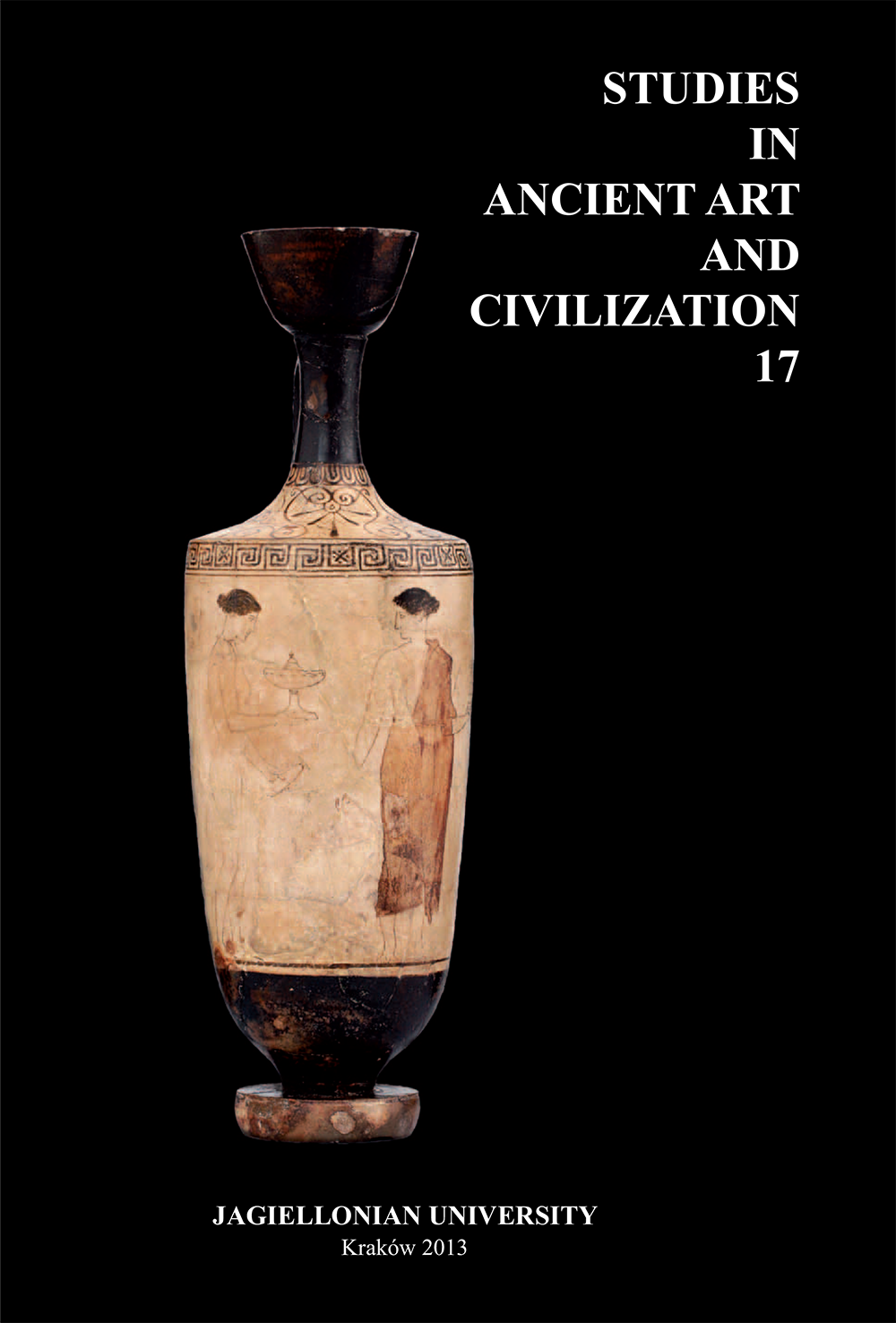A Few Comments on Loomweight Decoration
DOI:
https://doi.org/10.12797/SAAC.17.2013.17.25Keywords:
small finds, loomweight, ornamentationAbstract
This short paper aims to provide an overview of the two main types of ornamentation applied to loomweights. This type of artifact, though usually classified in the so-called ‘small finds’ category, often contains very interesting objects on which we can observe various kinds of ornamentation. The author will firstly identify two main types of decoration. The first of them relates to the application of signs, symbols or letters, while the second is more spectacular as it involves the application of engraved, impressed or painted iconographic representations. The author will then attempt to outline the hypotheses which have been put forward concerning the reasons behind the decoration of loomweights. The author will focus on three main possible causes. The first is the marking of the manufacturer of the weight, the second is the personal desire of the owner (e.g. decorative purposes) and the third relates to the votive and funerary nature of this type of artifact.
References
Artzy M. and Marcus E. 1995. A loom weight from Tel Nami with a scarab seal impression. IEJ 45, 136-150.
Davidson G. R. 1952. Corinth 12. The Minor Objects. New Jersey. DOI: https://doi.org/10.2307/4390685
Davidson G. R., Thompson D. B. and Thompson H. A. 1975. Small Objects from Pnyks 1. (Hesperia. Suppl. 7). Amsterdam. DOI: https://doi.org/10.2307/1353861
Dikaios P. 1969. Enkomi. Excavations 1948-1959. Vol. 1: The Architectural Remains. The Tombs. Mainz am Rhein.
Eccles E. 1940. Seals and sealings. BSA 40, 43-49. DOI: https://doi.org/10.1017/S0068245400004937
Jeffery L. H. 1946. Comments on some Archaic Greek inscriptions. JHS 69, 25-39. DOI: https://doi.org/10.2307/629460
Levi D. 1966. Bolli d’anfore e pesi fittili da Faistos. ASAtene 44, 569-588.
Maaskant Kleibrink M. 2000. Early cults in the Athenaion at Francavilla Marittima as evidence for a Pre-colonial circulation of nostoi stories. In F. Krinzinger (ed.), Die Ägäis und das westliche Mittelmeer. Beziehungen und Wechselwirkungen 8. bis 5. Jh. v. Chr. Akten des Symposions, Vien, 24 bis 27 März 1999, 165-184. (Österreichische Akademie der Wissenschaften. Archäologische Forschungen 4). Vienna.
Miszk Ł. 2012. Interpretation of loomweights in various archaeological contexts. SAAC 16, 119-129.
Shamir O. 2002. Loomweights from Khirbet er-Rujum. In Z. Gal (ed.), Eretz Zafon – Studies in Galilean Archaeology, 51-52. Jerusalem.
Tzouvara-Souli C. 1996. Seal impressions on loomweights from Kasope (Epirus). BCH. Suppl. 29, 497-509.
Wallrodt S. 2002. Ritual activity in late Classical Ilion: the evidence from a fourth century B.C. deposit of loomweights and spindle whorls. Studia Troica 12, 179-196.






